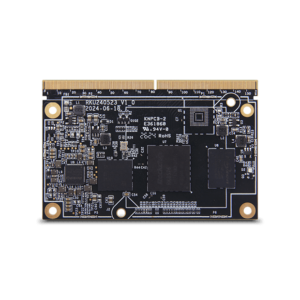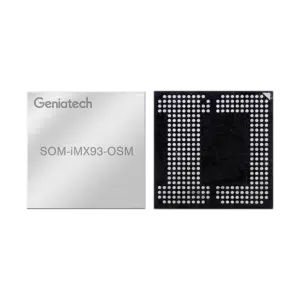System on Module vs. Traditional Development: Which Is Right for You?
System on Module vs. Traditional Development: Which Is Right for You?
Blog Article
The rapid growth of engineering has pushed significant innovations in stuck methods, certainly one of which is the computer on module market Acting as a bridge between custom technology and off-the-shelf adventures, the SoM is redefining how developers approach stuck program design. This website shows the essential understanding of a Process on Module and its growing programs in several industries.

What is a Process on Element (SoM)?
A Process on Module (SoM) is a small, ready-to-use table that combines all of the key aspects of a method about the same module. This an average of involves the model, memory, power administration units, and often extra peripherals like Wi-Fi or Ethernet. Unlike a normal single-board pc, an SoM doesn't include connections and screen locations pre-installed, meaning it must be along with a copyright panel to form a whole system.
Made to streamline development workflows, the modular nature of an SoM allows developers to miss the delicate process of developing and building every individual portion from scratch. By adopting an SoM, organizations can focus more on the application-specific functions of these products.
Features of Applying Program on Module
The integration of an entire program on one component presents a few benefits. First, it drastically decreases the full time necessary for solution development. Pre-tested segments ensure stability, keeping weeks of work for engineering teams.
Moreover, the scalability of an SoM allows firms to adjust efficiency levels centered on task requirements. As an example, a low-cost solution can quickly range right into a high-end item by changing the model in the component while preserving the copyright table design. This approach decreases engineering dangers while marketing long-term cost-efficiency.
Last but not least, the stability of an off-the-shelf module ensures large compatibility with existing tools and frameworks, which makes it well suited for equally little startups and big enterprises trying to to enter the market quickly.
Crucial Applications of SoM in Embedded Systems
The utilization of System on Adventures spans a few high-demand industries including but not limited to medical products, automation, and consumer electronics.
Medical Products
Reliability and stability are paramount in healthcare. System on Adventures with protected handling capabilities are stuck in screens, imaging devices, and portable diagnostic tools.
Commercial Automation
Powerful and energy-efficient, an SoM is vital for industrial get a handle on programs and autonomous robotics. Their scalable structure supports high-speed knowledge control and IoT connectivity.
IoT Devices

Customer services and products like smart thermostats, wearable products, and even home assistants integrate an ultra-compact System on Component for seamless performance.
The Program on Module remains to gain footing due to its paid off difficulty and versatility, cementing itself as a future-proof alternative in the embedded techniques sphere. Business leaders are actually leveraging these modules, and their range is anticipated to increase even further as technology evolves.
Report this page